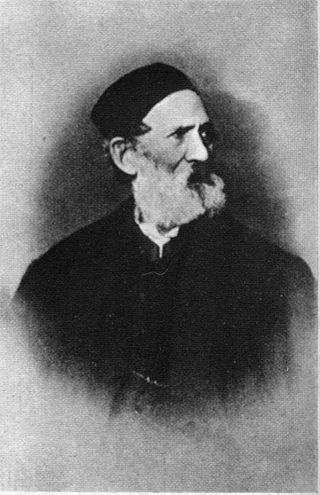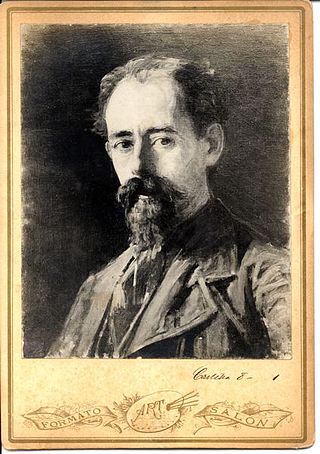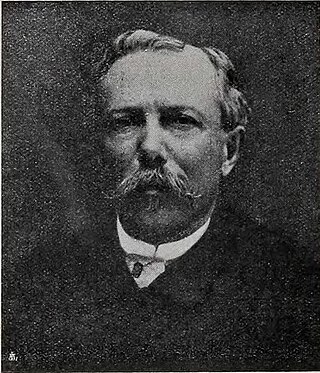Related Research Articles

Francesco Podesti was an Italian painter, active in a Romantic style. Together with Francesco Hayez and Giuseppe Bezzuoli, he is considered one of the greatest Italian painters of the first half of the 19th century. He was prolific in his large canvases on historical subjects. He is best known for his fresco work, including those in the Hall of the Immacolata in the Vatican Museum.
Giuseppe Bellisario was an Italian painter.

Adeodato Malatesta was an Italian painter, trained in a grand Neoclassical style, depicting mostly of sacred and historic subjects.

Giuseppe Bonolis was an Italian painter, known for his portraits and historical canvases.
Giovanni Ponticelli was an Italian painter.

Francesco Saverio Netti was an Italian painter.
Ulisse Ribustini was an Italian painter, mainly of conventional sacred subjects and genre subjects. He also painted large decorative murals at Ponte della Pietra, at the chapter house of the Cathedral of Perugia, at the parish church of Ferretto, near Castiglione del Lago, and at Gualdo Tadino Cathedral. As a young man he painted the frescoes depicting the Story of the Aeneid for the Sala Consiliare di Civitanova Marche. he also made over 100 illustrations based on Dante's Divine Comedy.

Teofilo Patini was an Italian painter, active in a Realist style.
Michele Comella was an Italian painter, mainly of landscapes. He was also a photographer.
Giuseppe Raffaele Tessitore was an Italian painter, mainly of landscapes and genre scenes.
Girolamo Pastore was an Italian painter.

Francesco Nenci was an Italian painter, mainly of historic and sacred subjects in a Neoclassical style.
Giovanni Conti was an Italian painter, mainly of sacred subjects.
Vincenzo Cecere (1897–1955) was an Italian painter, active in a Realist style.
Carlo Curci was an Italian painter, mainly of seascapes. He also was active in painting portraits in a Renaissance style.
Giovanni Di Giorgio was an Italian painter, mainly of genre subjects in oil and acquaforte. After studying at the Liceo artistico, he enrolled at the Institute of Fine Arts of Naples, under Pietro Barillà, Alberto Chiancone, and Eugenio Viti. Di Giorgio had won various awards for fresco and oil painting. He obtained a subsidy in 1939 to travel to Monza and study under Pio Semeghini and Raffaele De Grada. In 1937, he had exhibited a number of xerographs at the Circolo artistico Italo-Romano. Returning to Aversa in 1942, he taught design at the local School, and after 1970, was director of the Liceo Artistico Statale. Among his works are Dolenti note and Idillio campestre. He also illustrated books.

Gioacchino Toma was an Italian art instructor and painter, noted primarily for historic, realistic and genre subjects in a Romantic style.

Federigo or Federico Rossano was an Italian painter in a Realist style.
Orsola Faccioli or Licata Faccioli was an Italian painter, mainly of vedute and interior scenes.
Ignazio Perrici or Perricci was an Italian painter, sculptor, and decorator.
References
- ↑ Exhibition Catalogue for Artisti Dell'Agro Aversano tra Ottocento e Primo Novecento (1790-1922) by Franco Pezzella.
- ↑ Treccani Encyclopedia Biographical entry.
- ↑ The Conspiracy of Marin Faliero was destroyed during World War Two.
- ↑ Exhibition notes of Artisti Dell'Agro Aversano.